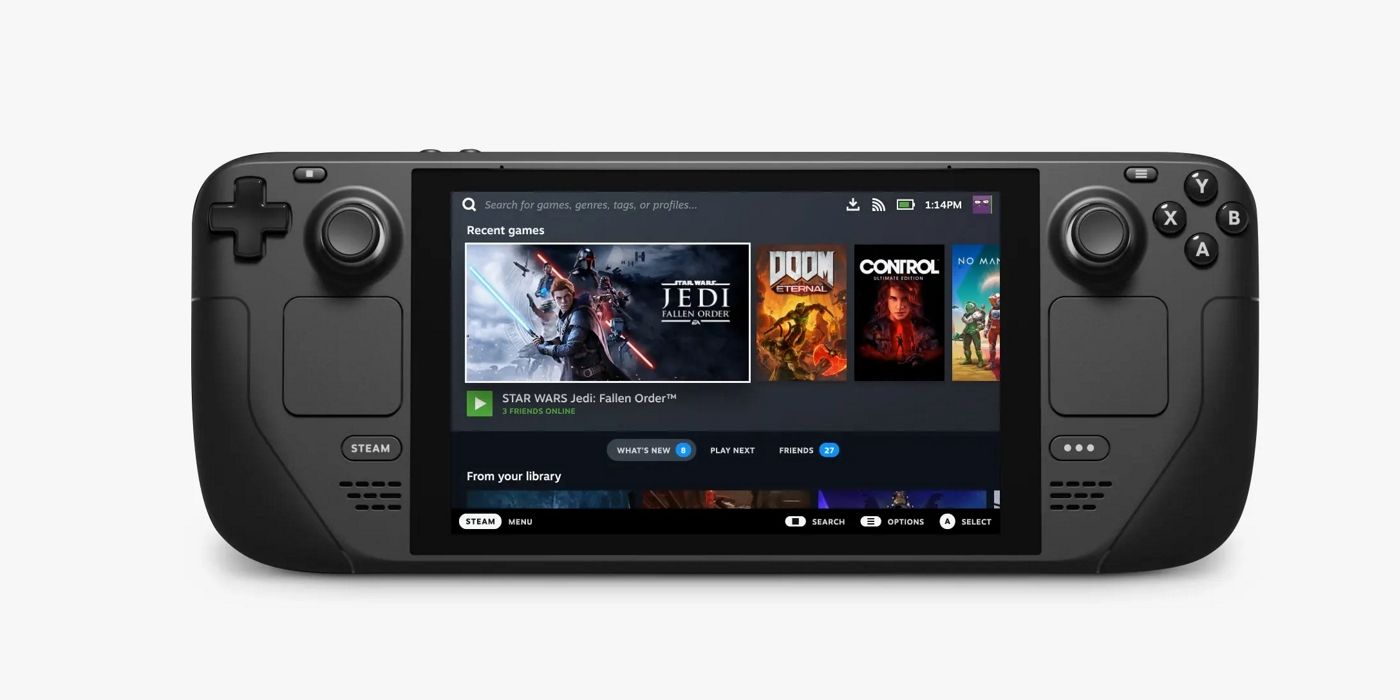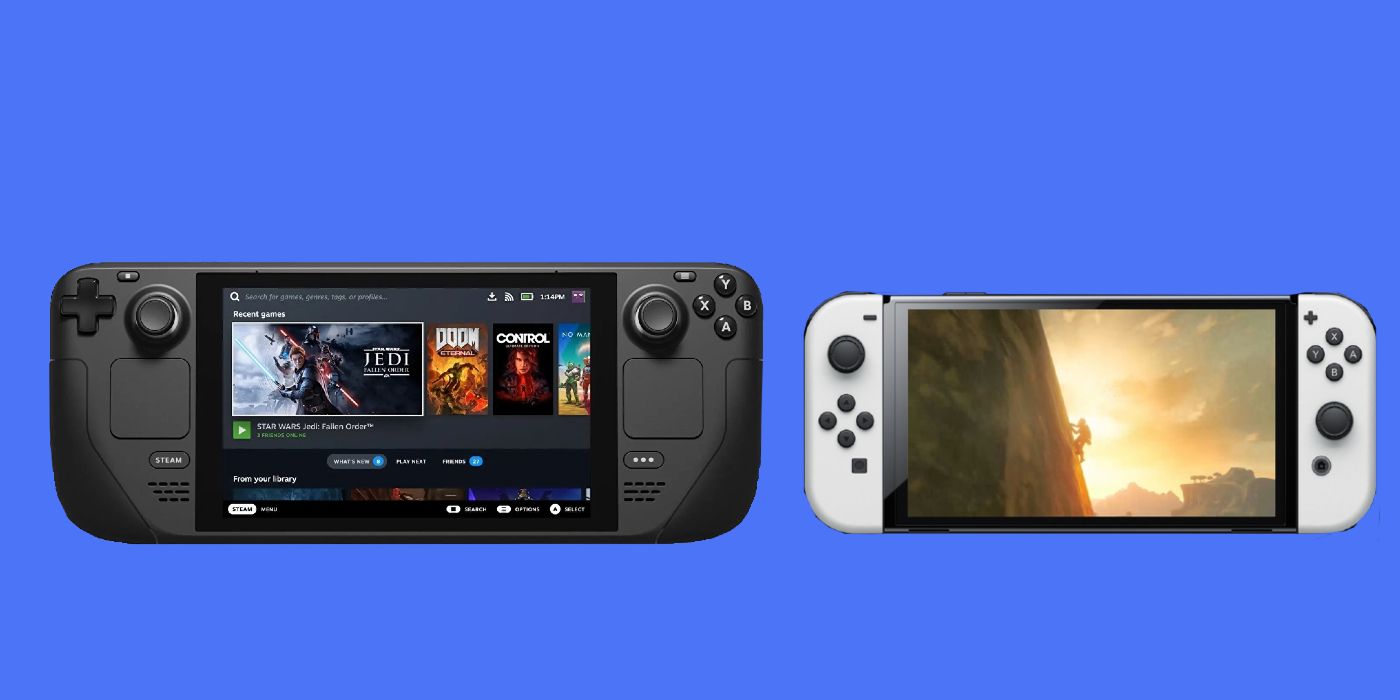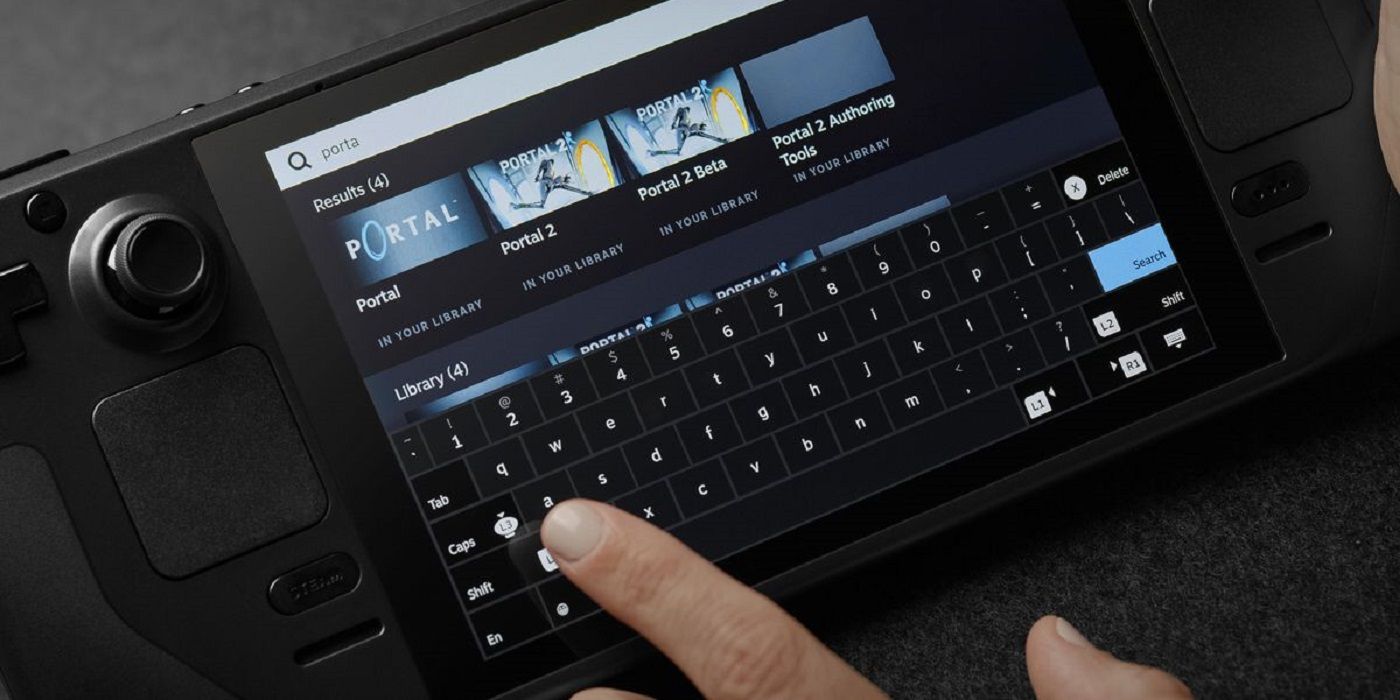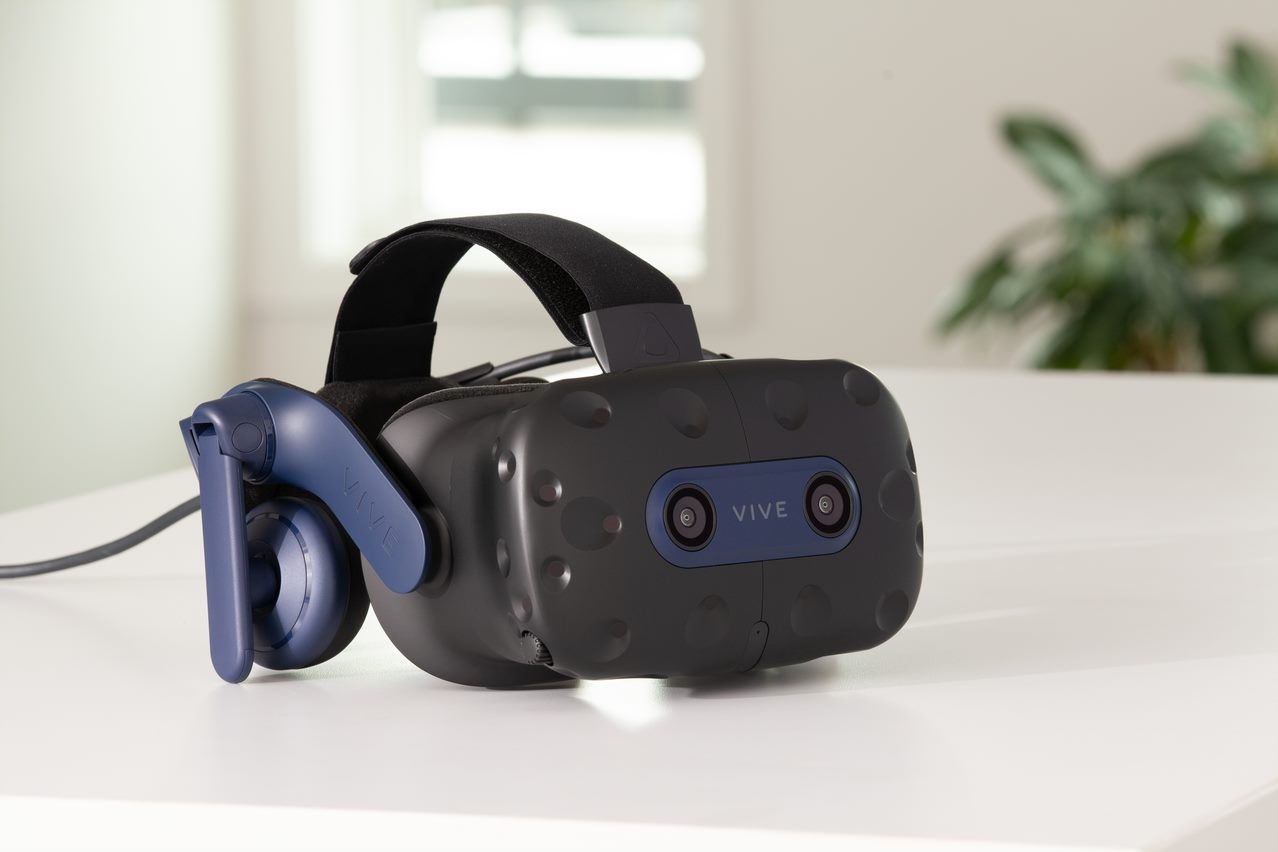The Steam Deck is Valve’s latest entry into the gaming hardware market. According to Valve, the console launches this holiday season, and it allows users to play certain PC games on the go. In terms of design, it heavily resembles the handheld Nintendo Switch, but uses the owner's Steam library and boasts some relatively powerful specifications for a handheld. With the upcoming launch of the Nintendo Switch OLED, it seems like there may well be a place in the handheld market for a more powerful machine.
Unfortunately, it's possible that Valve's high-end hardware could face similar problems as the Xbox Series X/S and the PlayStation 5 launches. When the latest consoles released at the height of the pandemic, there were huge shortages of Xbox Series X/S and PlayStation 5 products. Though the Steam Deck is a handheld device, several of its component parts might well lead to a similar lack in availability. Not only are there potential component problems, but Valve has a history of hardware distribution delays with previous new hardware releases.
A Global Semiconductor Shortage Could Still Cause Trouble
Throughout 2020 and 2021, there were notable problems in the distribution Xbox Series X/S and PlayStation 5, as well as issues with the new Nvidia graphics cards. One of the chief issues in this supply chain was a global shortage in semiconductors, caused by the COVID-19 pandemic. Semiconductors are essential bits of hardware for many modern electronic devices, from cars to game consoles. During the pandemic, due to a lack of consistent labor in production plants, the supply of these semiconductors began to dwindle drastically.
As a result of this shortage, electronics suppliers worldwide felt a significant pinch in terms of what they could and could not ship. Arguably the most noticeable effect of this difficult time for semiconductors was felt among console gamers everywhere. Most obvious with the PS5 shortages, but to a lesser extent the Xbox Series X/S, the supply of hardware very quickly failed to meet the demand.
The Steam Deck is slated for a release during holiday season 2021. This obviously gives fans insight as to what exactly Valve was doing during COVID, but it might also be cause for concern. If Valve’s console releases while there is still the shortage in semiconductors around the world, it will likely encounter similar issues as the Xbox Series X/S and PlayStation 5. Unfortunately for the company, this is an unprecedented time for electronics supply chains, so when this problem will be back to normal is anyone’s guess.
Semiconductor Shortages Also Hurt Handhelds
Another reason this issue could really hurt the Steam Deck is that this component shortage impacts handhelds massively. Nintendo president Shuntaro Furukawa talked about how this lack of semiconductors impacted the Switch's distribution during the pandemic. While the Switch had a huge sales milestone recently, which bodes well for the Steam Deck's potential market, the impact of this technological shortage is quite worrying. Although Nintendo has enough stock to continue production for the meantime, the lack of this vital component could last until 2023, according to some reports.
The Steam Deck Will Sell At A Loss
Another point of similarity between the Steam Deck and the other major consoles at launch is that Steam will likely sell it at a loss initially. This is fairly standard for many console producers, as this initial loss eventually makes up for itself in game and peripheral sales. Valve's Steam Deck is priced very aggressively, which is obviously key to the product getting into the market.
Of course, what this policy of aggressive pricing does accomplish is boost preorders. In turn, this could lead to more consoles preordered than Valve is able to produce, especially in the context of global hardware shortages. So, Valve's low pricing of the Steam Deck relative to its hardware specifications could be both a blessing and a curse to the console in the long run.
Valve's Previous Hardware Had Shortages
Not only does Valve have to contend with a market in the midst of a massive resource crisis, but it also has to deal with its history of troubled hardware releases. Throughout the launch and release of the HTC Vive, many users reported problems getting the Vive from Steam. While it should be noted that Steam was not the only company affected, there were also many shortages among Oculus Rift stock, indicating a potential issue with Steam’s ability to meet the demand for its physical products.
Of course, one of the distribution issues that the Vive faced was supply and demand of a brand new, relatively unestablished technology in the gaming sector. However, the Steam Deck arguably faces a similar problem. For Valve, a handheld gaming device is entirely untested waters. Not only that, but the Deck would be one of the only vaguely competitive handheld options to go up against the Nintendo Switch. Thanks to the sales juggernaut that is the Switch, Nintendo currently has an effective monopoly on the handheld console market.
So, not only does Valve have to contend with its historic issues with providing all the products its customers want, but it also has to go up against the dominant market opponent that is the Nintendo Switch. With the Switch being such a well-established handheld option in 2021 (and its OLED edition just around the corner), Valve need to make sure it can fulfil the demand of its customers. If it fails to do so, it might lose out in a big way to the widely distributed Nintendo Switch.
The Valve Steam Deck is due for release this December, in time for the holidays.





